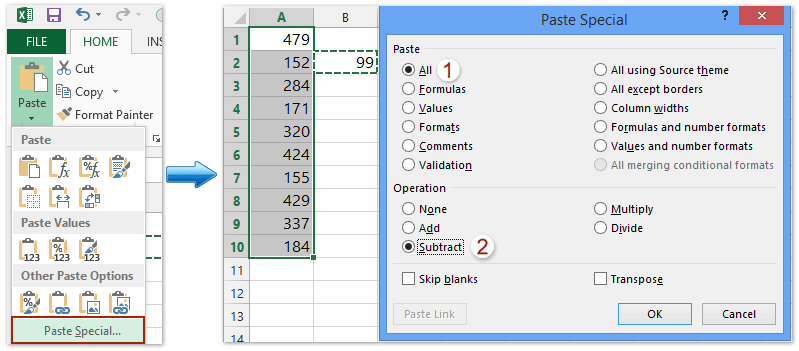


Another example is SUM(A1, A3, A5) which adds the numbers that are contained in cells A1, A3, and A5 (A1, A3, and A5 are arguments). For example, SUM(A1:A5) adds all the numbers in the range of cells A1 through A5. ' pieces' in column C is the starting inventory, 'qty' in column H is what you want to subtract. Top Contributors in Excel: Andreas Killer - Ashish Mathur - Jeovany CV - HansV MVP - Bob Jones AKA: CyberTaz. Each argument can be a range, a cell reference, an array, a constant, a formula, or the result from another function. Formula to subtract one cell from another cell if text criteria in a third cell is met. The SUM function adds all the numbers that you specify as arguments. To switch between viewing the results and viewing the formulas, press CTRL+` (grave accent) on your keyboard.Or, click the Show Formulas button (on the Formulas tab). In the worksheet, select cell A1, and then press CTRL+V.

Also when you apply the formula to the whole range there is no need to fill down: Sub FormulasNoLoops() With ThisWorkbook.Sheets('Sheet1'). Ask Question Asked 4 years, 5 months ago. Subtracts 9000 from 15000 (which equals 6000)Īdds all number in the list, including negative numbers (net result is 16000) Simple: Subtracting two columns in Excel VBA and filling down to the end of sheet in specific column. Select all of the rows in the table below, then press CTRL-C on your keyboard. This will subtract each row and sum the resultants for rows 2 through 14. Exampleįollow these steps to subtract numbers in different ways: Use the SUM function and convert any numbers that you want to subtract to their negative values. Note: There is no SUBTRACT function in Excel.


 0 kommentar(er)
0 kommentar(er)
